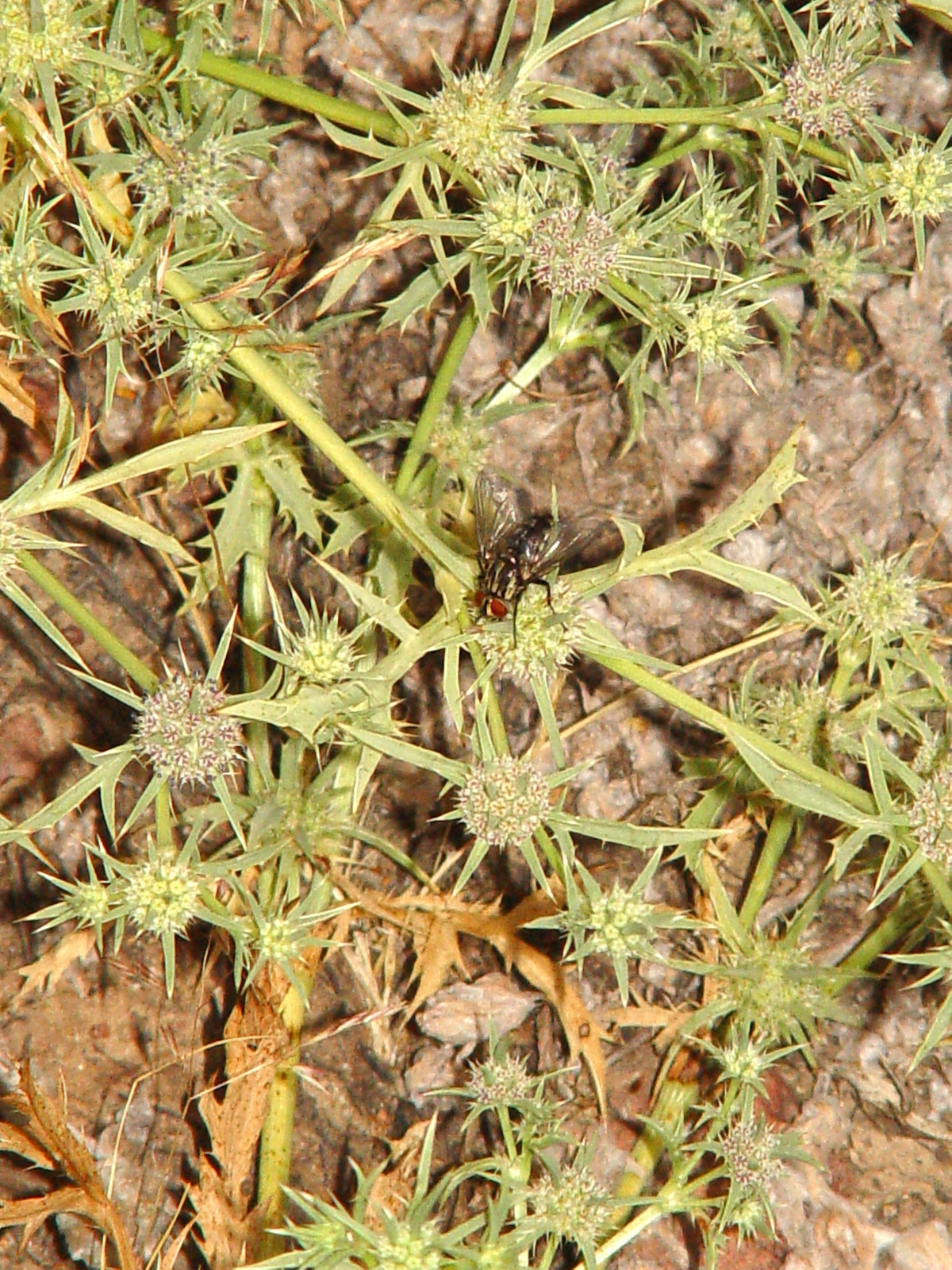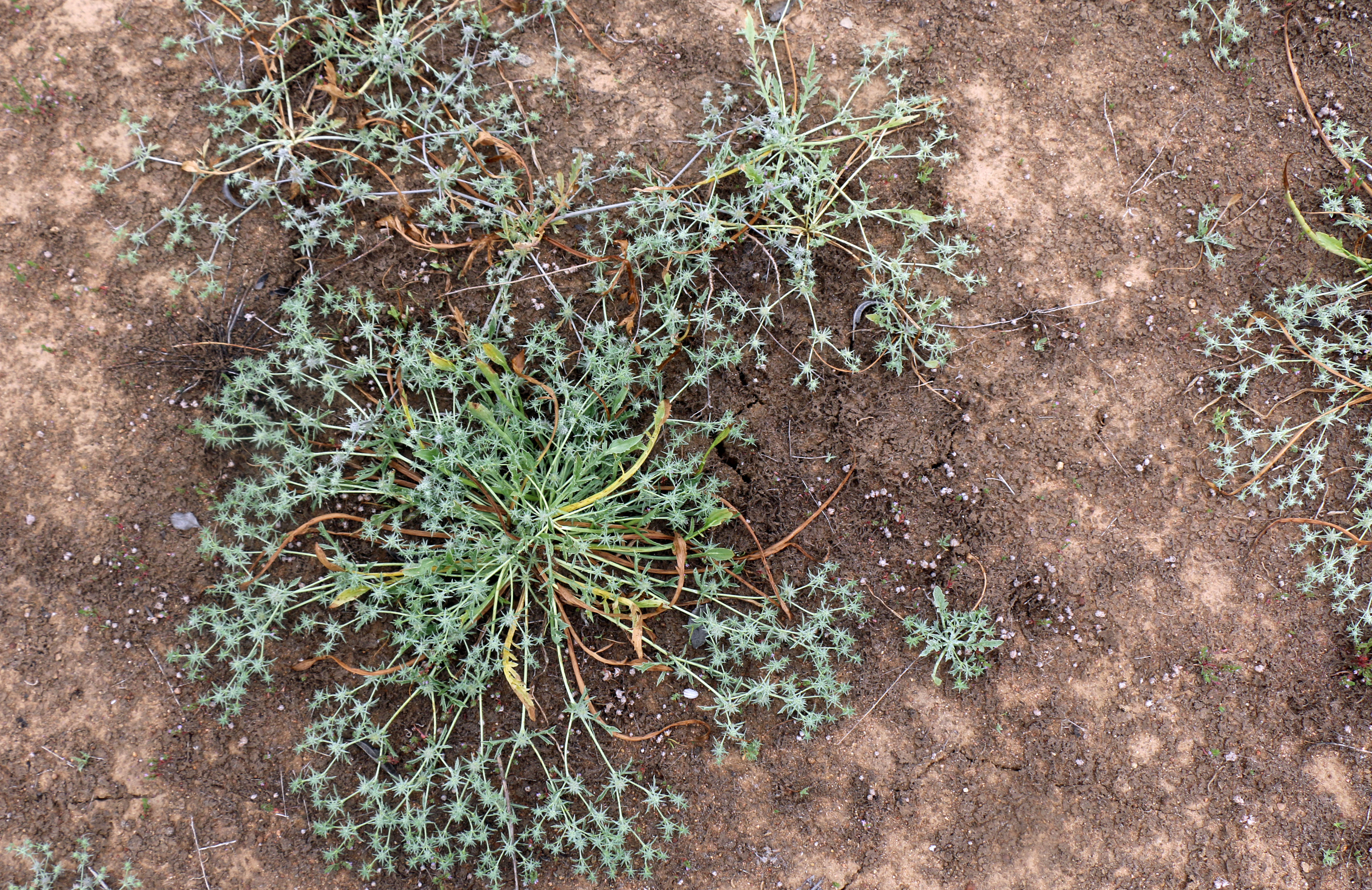Current Distribution Rangewide
Southwestern California south to a few occurrences in coastal northwestern Baja California, Mexico near San Quintin [1, 2].
Known Populations in San Diego County
Ten regional locations include Marine Corps Air Station Miramar, Marine Corps Base Camp Pendleton, Carlsbad, San Marcos, Ramona, Carmel Mountain, Del mar Mesa, Kearny Mesa, Otay Lakes, and Otay Mesa [3]. Within the MSPA it is known from MU2 (Kearny Mesa, Clairemont Mesa, Tierrasanta), MU3 (Otay Lakes, Otay Mesa), MU5 ( Ramona), MU6 (Del Mar Mesa, Carmel Mountain, Mira Mesa), MU7 (San Marcos, Carlsbad) [4].
List Status
FE and CE [5].
Habitat Affinities
San Diego button-celery is a clay soil, surface and non-surface hard pan, vernal pool obligate species but can also occur adjacent to and around vernal pools [1]. It occurs across various types of vernal pool soils but doesn't appear to be tied to any particular soil type [6]. Specifically adapted to surviving in vernally wet conditions due to the presence of aerenchyma tissue (air channels in the roots) that facilitates necessary gas exchange in submerged plants [7].
Taxonomy and Genetics
San Diego button-celery is one of three varieties of Eriastrum aristulatum and belongs to Apiaceae family. It is separated from Eryngium aristulatum var. aristulatum by having styles in fruit that are about the same length as the calyx (outer whorl of protective structures around the flower) and is separated from Eryngium aristulatum var. hooveri (Hoover’s button-celery) by having bractlets (modified leaves) without callused margins [8].The majority of populations once associated with E. aristulatum var. parishii on Camp Pendleton Marine Corps Base have been placed under a recently described species: Eryngium pendletonensis [9]. San Diego button-celery is distinguished from E. pendletonensis by a combination of leaf and flower structures. Chromosome number is 2n = 32 [10].
Life History Demography
Gray-green perennial herb with a persistent tap root [3]. Spreading to erect from 1 to 8 dm in length and 41 cm or more in height [10].
Seasonal Phenology
Blooms from April to June; the tiny white flowers vary in length from 1.5 to 2.5 mm, occur on short stalks with rigid spiny bracts, and are found in 1 to many flowered heads in cymes [10, 11]. Stems are gray-green with toothed leaves giving it a prickly appearance [10].
Pollination Seed Dispersal
Thought to be insect pollinated, with potential pollinators including bee flies (Bombyliids) and solitary bees (Apoidea) [12, 13]. Relies completely on ephemerally wet conditions associated with seasonal wetlands (vernal pools, swales) to reproduce [3]. Reproduces entirely by seed.
Threats
Threatened by habitat loss and degradation, urbanization and agricultural conversion, off-road vehicle use, livestock grazing, trampling/foot traffic, watershed alteration (drainage), and competition with non-native species throughout much of its range [3, 14] . Habitat loss remains the primary threat.
Special Considerations:
Although it can be common where found, it has a patchy distribution making it more susceptible to local extinction [1]. Conservation is dependent on maintaining hydrology and the surrounding watershed for the occupied vernal pools, as well as protecting adjacent upland habitats for pollinators [12]. Extant populations need to be managed to reduce stressors from on-site and adjacent activities [14]. Regular monitoring is essential to gauging population trends and stressor effects. Currently, the level of synecological relationships between pollinators and E. a. var. parishii is unknown. If a close ecological relationship exists with E. a. var. parishii and its pollinators, conservation of the pollinators at all life stages in habitat proximal to the vernal pool may be needed to preserve the efficiency of the pollination service [13].
Literature Sources
[1] California Natural Diversity Database. 2016. Eryngium aristulatum var. parishii, unpublished report, Natural Heritage Division, California Department of Fish and Game, Sacramento, California.
[2] Reiser, C.H. 2001. Rare Plants of San Diego County. Imperial Beach, CA: Aquafir Press.
[3] U.S. Fish and Wildlife Service. 2010. Eryngium aristulatum var. parishii San Diego button celery 5-Year Review: Summary and Evaluation. Carlsbad, CA: U.S. Fish and Wildlife Service Carlsbad Fish and Wildlife Office
[4] MSP-MOM. 2014. Management Strategic Plan Master Occurrence Matrix. San Diego, CA. Available: http://sdmmp.com/reports_and_products/Reports_Products_MainPage.aspx
[5] U.S. Fish and Wildlife Service. 1993. Determination of Endangered Status for Three Vernal Pool Plants and the Riverside Fairy Shrimp. Federal Register 58: 41384–41392.
[6] U.S. Fish and Wildlife Service. 1998. Recovery Plan for Vernal Pools of Southern California. Portland, OR.
[7] Keeley, J.E. 1998. CAM Photosynthesis in Submerged Aquatic Plants. Botanical Review 64:121-175.
[8] Constance, L. 1993. Apiaceae in The Jepson Manual, Higher Plants of California, J.C. Hickman, edit. Berkeley: University of California Press.
[9] Marsden, K. and M. Simpson. 1999. Eryngium pendletonensis (Apiaceae): a New Species from Southern California. Madroño 46:61-64.
[10] Preston R.E., M.S. Park, and L. Constance. 2016. Eryngium aristulatum var. parishii, in Jepson Flora Project (eds.) Jepson eFlora, Accessed Nov. 8, 2016.
[11] California Native Plant Society. 2016. Inventory of Rare and Endangered Plants (online edition, v7-09c). California Native Plant Soc. Sacramento, CA. Available: http://www.cnps.org/inventory.Accessed on November 8, 2016.
[12] Schiller, J.R., P.H. Zedler, and C.H. Black. 2000. The Effect of Density-dependent Insect Visits, Flowering Phenology, and Plant Size on Seed Set of the Endangered Vernal Pool Plant Pogogyne ambramsii (Lamiaceae) in Natural Compared to Created Vernal Pools. Wetlands 20:386-396.
[13] Thorp, R.W. 2007. Biology of Specialist Bees and Conservation of Showy Vernal Pool Flowers. A review. In: R.A. Schlising and D.G. Alexander (Eds.). Vernal Pool Landscapes. Studies from the Herbarium, # 14. California State University, Chico.
[14] Bauder, E.T. 1987. San Diego Vernal Pools, Recent and Projected Losses; Their Condition; and Threats to Their Existence 1979-1990, Volume 1. Endangered Plant Program, California Department of Fish and Game, Sacramento, CA.

